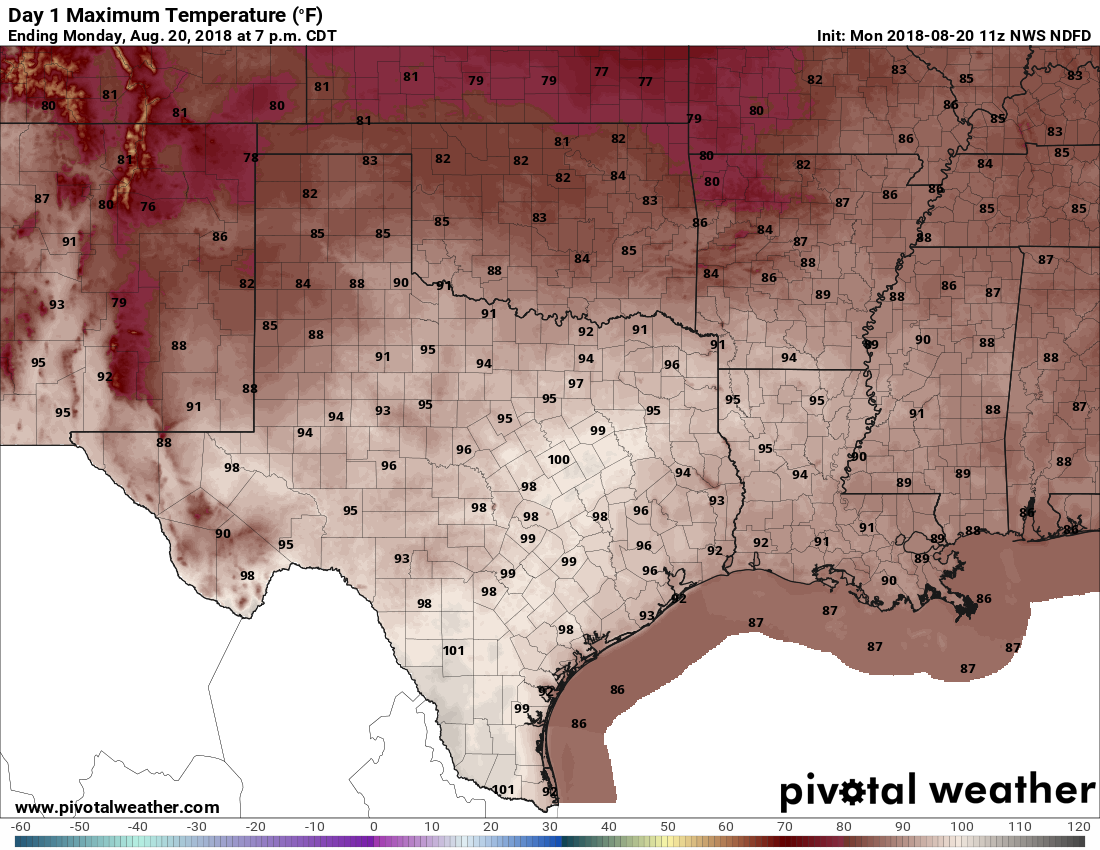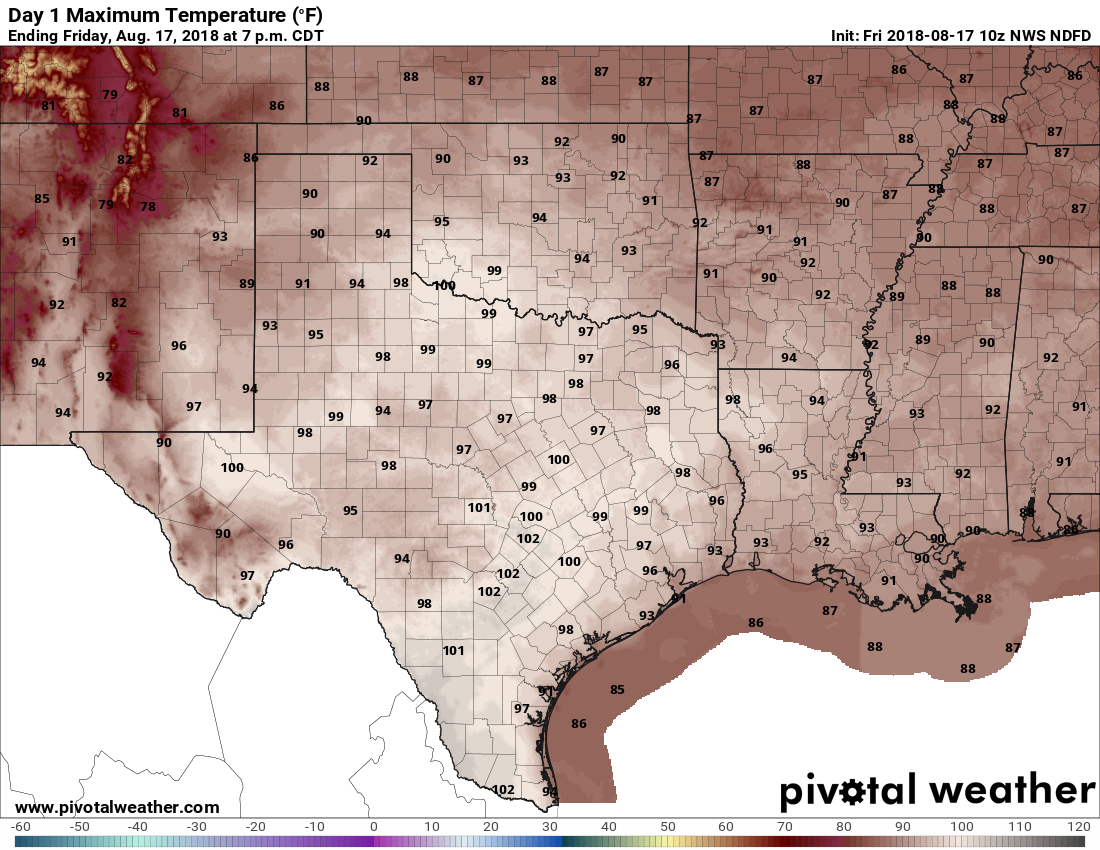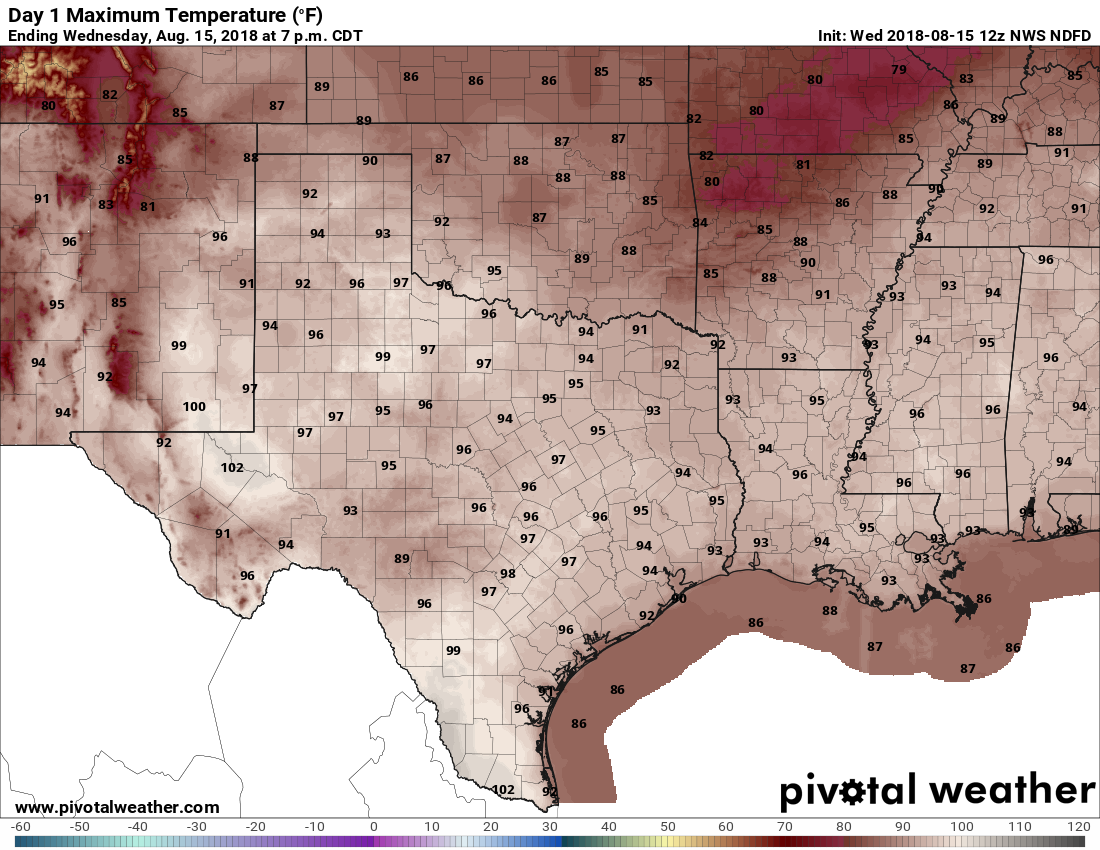The bulk of the region’s children may return to school this week, but weatherwise Houston will remain in full-on summer, with the potential for an additional 100-degree day or two during the midweek. A bit of drier air will help keep relative humidity down just a touch, which will help with the daytime heat index—a little bit.
Monday
Monday will probably see a continuation of the weather we saw this past weekend, with high temperatures in the mid- to upper-90s, partly sunny skies, and a slight chance of showers and thunderstorms.

Tuesday
Yes, that cold front we mentioned last week has progressed toward Texas, and on Tuesday the remnants of it will slowly limp into the greater Houston region. Don’t expect much (any, really) cooling, but the front will be the impetus for some rising air on Tuesday, and some slightly better rain chances. I suspect about 40 percent of the area will see some form of showers, ranging from sprinkles to about half an inch of rain, beginning early Tuesday and running throughout the day. Highs in the mid- to upper-90s.



